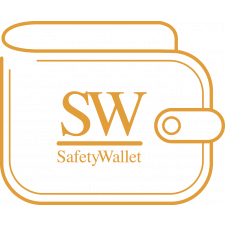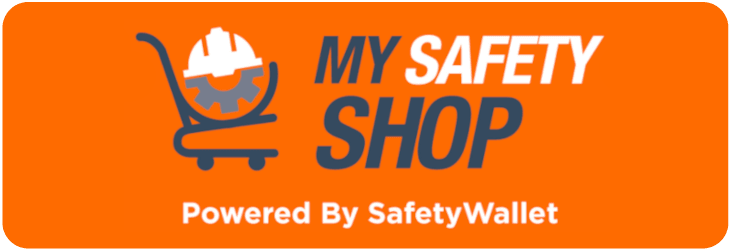What is the purpose of a Health and Safety Risk Assessment?
Overview
Employers across all industries are legally required to protect employees, contractors, customers, and visitors to the premiss from harm. To effectively do so, will require for a risk assessment to be carried out.
The purpose of a risk assessment is to improve the overall health and safety in the work environment, however, to achieve this, the risk assessment process must identify workplace hazards and either eliminate or reduce the risks that they pose.
Risk assessments must raise awareness regarding hazards and risks. In addition, they must convey health and safety information to employees. Risk assessment findings must be recorded so that compliance with health and safety legislation can be achieved and demonstrated.
Risk Assessments Raise Awareness
The first step involved in carrying out a health and safety risk assessment involves the identification of hazards and evaluating and analysing the risks that they pose. Employers must consider how hazards could potentially lead to accidents, injuries, or occupational illness, and who may be at risk of being harmed.
This step increases the awareness that the employer has with regards to health and safety risks in the workplace, allowing them to put the necessary control measures in place to remove the hazards or reduce the risks.
The findings that are derived from the risk assessment must be shared with employees to increase their awareness of both the hazards and the risks that they may face in their workplace. Increased awareness can lead to an increase in precautionary measures from employers, managers, and employees to reduce the risk of harm.
Eliminate or reduce Health and Safety Risks
The main purpose of any risk assessment is risk prevention and employers have an obligation to eliminate or reduce risks in the workplace. Thus, once the hazards have been identified and the risks they pose have been evaluated and analysed, control measures must be implemented.
Where it is possible and realistic, control measures can involve the removal of hazards so that risks can be eliminated. However, this is not always possible and for this reason, there must be controls in place to reduce the chance of harm.
Hazards come in a variety of forms including work equipment, cleaning products, or everyday activities. When risk assessments are being carried out, employers must identify and implement actions to reduce the likelihood of hazards becoming risks and risks causing harm. Such measures can include:
- Finding safer, alternative products or equipment.
- Preventing or restricting access to hazardous materials, sites, or equipment.
- Redesigning processes, adopting standard operating procedures, or safe work practices, with such processes outlined in a method statement.
- Using Personal Protective Equipment (PPE).
Communicate Health and Safety Information
Once employers have finished carrying out a risk assessment, the findings must be recorded and shared with all employees throughout the organisation. Employees must have access to risk assessments at any given time, as it contains crucial health and safety information that workers can use to safeguard their health and safety in the workplace.
As previously mentioned, risk assessments can raise awareness of hazards, it can also provide employees with a clearer understanding of the measures that were implemented, allowing them to use the precautions to safeguard their own health and safety.
Risk assessments contain details on the safety precautions that must be taken when working with dangerous equipment and materials. It controls equipment that can be used and how employees are expected to comply with health and safety policies.
Demonstrate compliance
Should the employer’s compliance be called into question, risk assessments can often be the first place that inspectors look for proof that the health and safety hazards were identified, risks were evaluated and analysed, and control measures were put in place to ensure a health and safety workplace for all employees, contractors, visitors, and the public.
By carrying out risk assessments and by ensuring that the findings are recorded, employers can show their compliance with the Occupational Health and Safety Act 85 of 1993 and all other relevant regulations.
How does SafetyWallet support its subscribers?
SafetyWallet, in partnership with MAKROSAFE and OHS Online, ensures that subscribers can obtain the highest level of compliance with the Occupational Health and Safety Act, all other Regulations, and more.
MAKROSAFE / SAFETYWALLET / MY SAFETY SHOP are all in Partnership.
Through the assistance and support in the health and safety programme of the subscriber, SafetyWallet helps subscribers with the health and safety risk assessments that must be conducted to ensure that subscribers are compliant in providing a healthy and safe working environment.
Click on the image below to find a SafetyWallet Solution that suits your business (Branch/Site specific) and get the benefits along with the subscription:
Keeping your workplace legally Health and Safety Compliant may seem like a daunting task. At MAKROSAFE, we have an experienced team of OHS experts available to assist in keeping your company Health and Safety Compliant according to South African Occupational Health and Safety Act 85 of 1993 and Regulations.
The MAKROSAFE Health and Safety Risk Control Package will assist you with your Risk Management Programme.
By signing up with our Health and Safety Risk Control Package, MAKROSAFE will assist you with your Risk Management journey.

-What-is-the-purpose-of-a-Health-and-Safety-Risk-Assessment-Banner-1.jpg)






Comments (1)
Interesting Article.
2022-12-01 14:03:18Dear Rubini Thank you for your time reading our Article, we really do appreciate it with your comment... Kindly follow this link to read all about The Health and Safety Risk Assessment Package: https://www.makrosafe.co.za/The-Health-and-Safety-Risk-Assessment-Package
2022-12-07 09:19:22